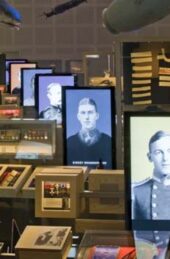The Divided Island
There is a place in the Levant that is divided, its people at loggerheads many years after the British departed, leaving behind a nation of two communities that had previously lived in peace, but where outbreaks of horrific violence have occurred since gaining independence. I am, of course, describing Cyprus, which today is two countries – one, the Republic of Cyprus recognised by the international community, and the other, the Turkish Republic of Northern Cyprus, most certainly not.
There is much history to be found on the third largest island in the Med. As readers of Aspects of History will be aware, Cimon, the great Athenian general, freed the Greeks of Cyprus from Persian rule during his highly successful campaigns in the eastern Mediterranean. It was liberated again from the Persian Empire by Alexander the Great in 333BC, before the Egyptians, Romans, Byzantines, Crusaders, Venetians and then for longest the Ottomans, all controlled this strategically important foothold.
In 1878 the British gained Cyprus through the Congress of Berlin, and then held it during both world wars, before EOKA (Ethniki Organosis Kyprion Agoniston – National Organisation of Cypriot Fighters) engaged in terrorist attacks during the 1950s with the goal of enosis, unification with Greece. The problem, as with so many ethno-nationalist movements throughout Europe, is there are always people with whom land is shared, and so have their own loyalties. Enosis was viewed with understandable hostility by the Turks of the island, who make up around 20% of Cypriots.

The population distribution of Cyprus in 1960
Anyone who has read Lawrence Durrell’s Bitter Lemons, will understand the complexities, but also the harmony among the population during the years leading up to 1960, the year Cyprus broke with Britain – though enosis remained elusive. There is a scene in the book, a wonderful account of Durrell’s life on the island, when he attempts to purchase a house with the help of a local Turkish fixer. This is a man who has built up a reputation with all his neighbours as the chap to go to if you want something done. There follows a hilarious set of events that will have the reader in stitches.
There is love among Turk and Greek in Cyprus, but that didn’t stop killings from taking place during 1962 and 1963 as the majority Greeks engaged in slaughter, much of it score settling, and we still don’t know how many died. A decade later and the government in Turkey had had enough when a coup brought an enthusiast for enosis to power. In 1974 30,000 Turkish troops invaded and now the ethnic cleansing shoe was on the other foot, as Greek Cypriots suffered terribly through rapes and killing. Again, numbers are very difficult to establish.
All this history is brought to life in a new film, The Divided Island, directed by Turkish Cypriot Cey Sesiguzel and produced by Greek Cypriot Andreas Tokkallos. The history is dealt with dispassionately, but with empathy, by professional historians. Cypriots from both sides describe the horrors they experienced. Trauma is the very real monster ever present throughout this very moving documentary, though I didn’t find it necessary for the use of a psychologist to spell out what is all too clear from a succession of powerful testimonies on screen.
Nicosia, the capital, remains split today, quite literally – there is a wall dividing the city, similar to those ‘peace walls’ in Belfast, and the similarities with Ireland are glaring. There is now a new cohort pushing for unification, and they provide The Divided Island‘s optimism. One hopes they are successful, but it will require the elder generation to forget their traumatic past, and that’s a big ask.
The Divided Island is out in cinemas from 1st November.






